This article needs additional citations for verification. (June 2012) (Learn how and when to remove this template message) |


A picnic is a meal taken outdoors (al fresco) as part of an excursion – ideally in scenic surroundings, such as a park, lakeside, or other place affording an interesting view, or else in conjunction with a public event such as preceding an open-air theatre performance, and usually in summer.
Picnics are usually meant for the late mornings or midday breakfasts, but could also be held as a luncheonette or a dinner event. Descriptions of picnics show that the idea of a meal that was jointly contributed and was enjoyed out-of-doors was essential to a picnic from the early 19th century.
Picnics are often family-oriented but can also be an intimate occasion between two people or a large get together such as company picnics and church picnics. It is also sometimes combined with a cookout, usually a form of barbecue; either grilling (griddling, gridironing, or charbroiling), braising (by combining a charbroil or gridiron grill with a broth-filled pot), baking, or a combination of all of the above.
On romantic and family picnics, a picnic basket and a blanket (to sit or recline on) are usually brought along. Outdoor games or some other form of entertainment are common at large picnics. In established public parks, a picnic area generally includes picnic tables and possibly other items related to eating outdoors, such as built-in grills, water faucets, garbage containers, and restrooms.
Some picnics are a potluck, an entertainment at which each person contributed some dish to a common table for all to share. When the picnic is not also a cookout, the food eaten is rarely hot, instead taking the form of deli sandwiches, finger food, fresh fruit, salad, cold meats and accompanied by chilled wine or champagne or soft drinks.
Contents
Etymology
The first usage of the word is traced to the 1692 edition of Tony Willis, Origines de la Langue Française, which mentions pique-nique as being of recent origin; it marks the first appearance of the word in print. The term was used to describe a group of people dining in a restaurant who brought their own wine. The concept of a picnic long retained the connotation of a meal to which everyone contributed something. Whether picnic is actually based on the verb piquer which means 'pick' or 'peck' with the rhyming nique meaning "thing of little importance" is doubted; the Oxford English Dictionary says it is of unknown provenance.
The word picnic first appeared in English in a letter of the Gallicized Lord Chesterfield in 1748 (OED), who associates it with card-playing, drinking and conversation, and may have entered the English language from this French word. The practice of an elegant meal eaten out-of-doors, rather than an agricultural worker's dinner in a field, was connected with respite from hunting from the Middle Ages; the excuse for the pleasurable outing of 1723 in François Lemoyne's painting (illustration, left) is still offered in the context of a hunt.
Though it may have appeared in a 17th-century dictionary as "pique-nique," the actual usage began as "pique un niche" meaning to "pick a place," an isolated spot (a nest) where family or friends could enjoy a jolly meal together away from the distractions, demands, and public nature of a communal life. The term morphed into "pique-nique" and after years of usage entered the official French language.
Despite having been thoroughly debunked, a spurious etymology linking the origin of the word to lynchings of African-Americans in the American South continues to resurface from time to time.
Related historical events
After the French Revolution in 1789, royal parks became open to the public for the first time. Picnicking in the parks became a popular activity amongst the newly enfranchised citizens.
Early in the 19th century, a fashionable group of Londoners (including Edwin Young) formed the 'Picnic Society'. Members met in the Pantheon on Oxford Street. Each member was expected to provide a share of the entertainment and of the refreshments with no one particular host. Interest in the society waned in the 1850s as the founders died.[6]
From the 1830s, Romantic American landscape painting of spectacular scenery often included a group of picnickers in the foreground. An early American illustration of the picnic is Thomas Cole's The Pic-Nic of 1846 (Brooklyn Museum of Art).[7] In it, a guitarist serenades the genteel social group in the Hudson River Valley with the Catskills visible in the distance. Cole's well-dressed young picnickers having finished their repast, served from splint baskets on blue-and-white china, stroll about in the woodland and boat on the lake.
The most stressful factor of the outing is there are legal considerations that come adjoined with the excursion in case any untoward incidents takes place. However, by keeping a few safety tips in mind, teachers can ensure that the School Picnic Spots near Delhi NCR turn out to be a pleasant experience for everyone.
The image of picnics as a peaceful social activity can be utilised for political protest, too. In this context, a picnic functions as a temporary occupation of significant public territory. A famous example of this is the Pan-European Picnic held on both sides of the Hungarian/Austrian border on the 19 August 1989 as part of the struggle towards German reunification.
In 2000, a 600-mile-long picnic took place from coast to coast in France to celebrate the first Bastille Day of the new Millennium. In the United States, likewise, the 4 July celebration of American independence is a popular day for a picnic. In Italy, the favorite picnic day is Easter Monday.
Cultural representations of picnics
In film
- The 1955 film Picnic, based on the Pulitzer Prize-winning play by William Inge, was a multiple Oscar winner. The film has been remade twice, in 1986 and 2000.
- Picnickers are used to illustrate the scale of one metre in the film Powers of Ten (1968).
- The Office Picnic (1972) is a dark comedy set in an Australian Public Service office. It was written and produced by filmmaker Tom Cowan, who is now famous for his work on the series Survivor.
- In Peter Weir's mystery film Picnic at Hanging Rock (1975), three girls and one of their teachers on a school outing mysteriously disappear. The only one who is later found remembers almost nothing. It is based on a 1967 drama and mystery novel of the same name by Australian author Joan Lindsay.
- In Bhaji on the Beach (1993, titled Picknick on the Beach in the German version), nine Indian women of various ages flee from their everyday lives by taking a joint excursion to the British resort town of Blackpool.
- Blissfully Yours (2002), features a picnic in a jungle.
- Picnics are featured in several episodes of the AMC series Mad Men, most notably S2 Ep.7 The Gold Violin (2008) in which the family dumps their picnic garbage thoughtlessly in the park.
In fine art
- Perhaps the most famous depiction of a picnic is Le déjeuner sur l'herbe (The Luncheon on the Grass) by Édouard Manet. The 1862 painting depicts the juxtaposition of a female nude and a scantily dressed female bather on a picnic with two fully dressed men in a rural setting.
In literature
A book of verse beneath the bough,
A loaf of bread, a jug of wine, and thou
Beside me singing in the Wilderness –
Ah, wilderness were paradise enow!—?Omar Khayyam, in his 12th century Rubaiyat[8]
- In Fernando Arrabal's Picnic in the Field, the young and inexperienced soldier Zepo is visited unexpectedly by his devoted parents. Despite the war setting they have a cheerful picnic together.
- In Jane Austen's novel Emma, at the Box Hill picnic which turned out to be a sore disappointment, Frank Churchill said to Emma: "Our companions are excessively stupid. What shall we do to rouse them? Any nonsense will serve..." (Project Gutenberg Entry:[9])
- The novel Roadside Picnic by Boris and Arkady Strugatsky, which was written in 1972, was the source for the film Stalker (1979) by Andrei Tarkovsky. The novel is about a mysterious "zone" filled with strange and often deadly extraterrestrial artifacts, which are theorized by some scientists to be the refuse from an alien "picnic" on Earth.
- No Picnic on Mount Kenya, by Felice Benuzzi, recounts the attempt of three Italian prisoners of war during the Second World War to picnic on top of Mount Kenya.
- From Charles Dickens' The Mystery of Edwin Drood: "...Miss Twinkleton (in her amateur state of existence) has contributed herself and a veal pie to a picnic." (Project Gutenberg Entry:[10])
- The Wind in the Willows (1908), by Kenneth Grahame, begins with a boating picnic enjoyed by Rat and Mole that exemplifies an English tradition:
"The Rat brought the boat alongside the bank, tied it up, helped awkward Mole safely ashore, and swung out the picnic basket. The Mole begged to be allowed to unpack it all by himself. He took out all the mysterious packets one by one and arranged their contents, gasping 'Oh my! Oh my!' at each fresh surprise."
In music
- In 1906, the American composer John Walter Bratton wrote a musical piece originally titled "The Teddy Bear Two Step". It became popular in a 1908 instrumental version renamed "Teddy Bears' Picnic", performed by the Arthur Pryor Band. The song regained prominence in 1932 when the Irish lyricist Jimmy Kennedy added words and it was recorded by the then popular Henry Hall (and his BBC Dance Orchestra) featuring Val Rosing (Gilbert Russell) as lead vocalist, which went on to sell a million copies. "The Teddy Bears' Picnic" resurfaced again in the late 1940s and early 1950s when it was used as the theme song for the Big Jon and Sparkie children's radio show. This perennial favorite has appeared on many children's recordings ever since, and is the theme song for the AHL's Hershey Bears hockey club. lyrics and audio from the BBC
- "Stone Soul Picnic", by Laura Nyro (released in 1968), was a major hit for the group The 5th Dimension.
- "Malcolm's X-Ray Picnic" was a moderate hit for the indie-pop group Number One Cup.
- Roxette's "June Afternoon" depicts images of people having fun and eating on a park during a warm June day.
Gallery
A table on the dock awaits picnickers at Lake Providence, Louisiana, 2013.
United States Army officers and their families having a picnic at Fort Thomas, Arizona, in 1886
- Release Date :12:00am on Saturday 1st January 1966
Watch movie Picnic online on Amazon
Watch movie Picnic online
Watch The Movie On Prime
Gentleman Full HD Movie Download

Durga Pooja Full HD Movie Download
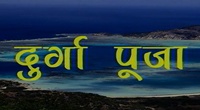
Chillar Party Full HD Movie Download
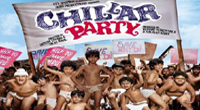
Joggers Park Full HD Movie Download

Sanam Harjai Full HD Movie Download
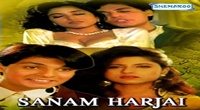
Ankahee (1985) Full HD Movie Download
.jpg)
Aag Ka Gola Full HD Movie Download
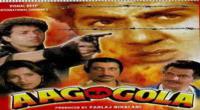
Sleepy Hollow Full HD Movie Download
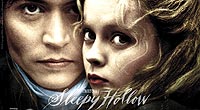
Mera Pind My Home Full HD Movie Download
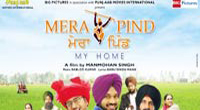
Jai Bhole Bam Bam Full HD Movie Download
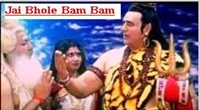
Khurchi Samrat Full HD Movie Download
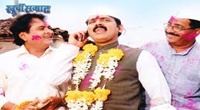
Chuttalunnaru Jagratta Full HD Movie Download
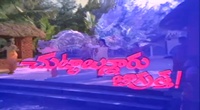
Crime Story Full HD Movie Download
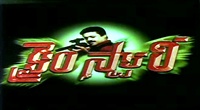
Thirumathi Oru Vegumathi Full HD Movie Download
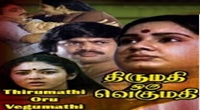
Harry Potter and the Order of the Phoenix Full HD Movie Download

The Bucket List Full HD Movie Download
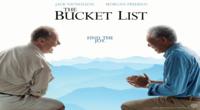
Seetha Kalyanam Full HD Movie Download
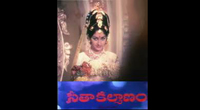
Around The World In 80 Days Full HD Movie Download
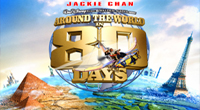
Prema Gola Full HD Movie Download
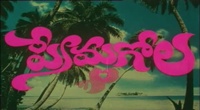
Vaddu Bava Thappu Full HD Movie Download
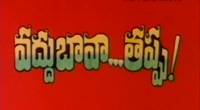
Kati Patang Full HD Movie Download
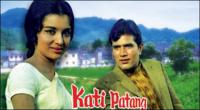

Download latest Movie from bollywood
- 1> baaghi 3
- 2> THE SKY IS PINK MOVIE FULL STORY AND REVIEW
- 3> Luka Chuppi
- 4> TO ALL THE BOYS I’VE LOVED BEFORE
- 5> Kabir Singh
- 6> Street Dancer 3D
- 7> Simmba
- 8> Gone Girl
- 9> The Girl Who Lived
- 10> Ludo
- 11> DILWALE DULHANIA LE JAYENGE
- 12> GUILTY
- 13> The Godfather
- 14> Adventures of Rusty
- 15> Sooryavanshi
- 16> Satyameva Jayate 2
- 17> Thappad
- 18> Bhool Bhulaiyaa 2
- 19> KGFChapter 2
- 20> Mardaani 2
- 21> Pinjar
- 22> Shivaji maharaj
- 23> Ek Villian 2
- 24> Hungama 2
- 25> Divergent
- 26> Mumbai Saga
- 27> The Internship
- 28> HIT (telugu)
- 29> Panga
- 30> The perfect date
- 31> 16 December
- 32> Gopala Gopala (Telugu)
- 33> Brahmastra
- 34> Gangubai Kathiawadi
- 35> Manmadhudu
- 36> Nenu local
- 37> Mahanati
- 38> Shatamanam bavathi
- 39> Lagaan
- 40> After
- 41> MOM
- 42> Shamshera
- 43> Raguvaran BTech
- 44> Khakee
- 45> The villain
- 46> OM
- 47> Mr. perfect
- 48> Bueatifull mind
- 49> Hichki
- 50> Gabbar Singh
- 51> Jogi
- 52> Before Sunrise
- 53> Before Sunset
- 54> Before Midnight
- 55> The Big Bull
- 56> Top Gun: Maverick
- 57> The Purge
- 58> The Sky is Pink
- 59> Laxmmi Bomb
- 60> Sadak 2
- 61> Sufna
- 62> Prithviraj
- 63> PK
- 64> Coolie No 1(2020)
- 65> Black Widow
- 66> Dear Zindagi
- 67> Dil Bechara
- 68> PHIR HERA PHERI
- 69> WAR
- 70> Dostana
- 71> RRR: Roudram Ranam Rudhiram
- 72> Maidan
- 73> Dabbang 3
- 74> Chhalaang
- 75> life as we know it
- 76> SherShaah
- 77> Sandeep Aur Pinky Faraar
- 78> Event Horizon
- 79> 83
- 80> Radhe: Your Most Wanted Bhai
- 81> Gunjan Saxena: The Kargil Girl
- 82> Mr India
- 83> Vivah
- 84> Anokha Bandhan
- 85> Ghost
- 86> Bhoot: Part One - The Haunted Ship
- 87> Haseen Dilruba
- 88> Laal Singh Chaddha
- 89> Qismat
- 90> Rajput
- 91> Drive
- 92> Dil Chahta Hai
- 93> Dil Ki Baazi
- 94> Dil Ka Rishta
- 95> Teesri Manzil
- 96> Dil
- 97> Love Aaj Kal
- 98> Khaali Peeli
- 99> Bunty Aur Babli 2
- 100> Atrangi Re
- 101> Gulabo Sitabo
- 102> Jodi
- 103> Suraj Pe Mangal Bhari
- 104> Deewana
- 105> Attack
- 106> Sardar Udham Singh
- 107> Toofan
- 108> THE LOVEBIRDS
- 109> Jersey
- 110> Ginny Weds Sunny
- 111> Thalaivi
- 112> Shiddat
- 113> Angels vs Zombies
- 114> Koi Mil Gya
- 115> Thank God
- 116> Bhuj: The Pride of India
- 117> Hum Aapke Hain Kaun
- 118> The Platform
- 119> Bird Box
- 120> Roohi Afzana
- 121> Torbaaz
- 122> Nikamma
- 123> World War Z
- 124> Extraction
- 125> Train to Busan
- 126> Life of Pi
- 127> SHAADI MEIN JROOR AANA
- 128> Himmat Aur Mehnat
- 129> To All The Boys: P.S. I Still Love You
- 130> Mimi
- 131> Good Newwz
- 132> Shubh Mangal Zyada Saavdhan
- 133> Raabta
- 134> Harry Potter and the Philosopher's Stone
- 135> Harry Potter and the Chamber of Secrets
- 136> Chhapaak
- 137> War of the Worlds
- 138> Harry Potter and the Prisoner of Azkaban
- 139> Harry Potter and the Goblet of Fire
- 140> MURDER MYSTERY
- 141> Shakuntala Devi
- 142> Bachchan Pandey
- 143> Jayeshbhai Jordar
- 144> Sheer Qorma
- 145> Saina
- 146> 'O' Pushpa I hate tears
- 147> Kedarnath
- 148> MS Dhoni The Untold Story
- 149> Chhichhore
- 150> Badhaai Ho
- 151> Unstoppable
- 152> Oz the Great And Powerful
- 153> The Girl on the Train
- 154> Haathi Mere Saathi 2020
- 155> The Conjuring: The Devil Made Me Do It
- 156> Gandhi Se Pehle Gandhi
- 157> The Song of Scorpions
- 158> Srimanthudu
- 159> Hello Guru Prema Kosame
- 160> Beauty and The Beast
- 161> Black Panther
- 162> Charlie and the Chocolate Factory
- 163> Bole Chudiyan
- 164> Fidaa
- 165> Duvvada Jagannadham
- 166> Bruce Lee: The Fighter
- 167> Hyper
- 168> Yaara
- 169> Red (2020)
- 170> Shivam
- 171> That Is Mahalakshmi
- 172> Nishabdham
- 173> Aashram 2020 web series
- 174> Laxmii
- 175> Mismatched
- 176> STUDENT OF THE YEAR 2
- 177> NAIL POLISH
- 178> Ramprasad Ki Tehrvi
- 179> KAAGAZ
- 180> 12 o Clock
- 181> The Power
- 182> bolo hau
- 183> Tribhanga
- 184> JAMUN
- 185> Madam Chief Minister
- 186> Maasaab
- 187> Aadhaar
- 188> Tanhaji
- 189> Bhaagi 3
- 190> Bhootnath
- 191> MALANG
- 192> Jai Mummy Di
- 193> Haathi Mere Saathi 2021
- 194> Shakeela
- 195> Unpaused
- 196> Annayya
- 197> Vamsoddharakudu
- 198> Mrugaraju
- 199> Narasimha Naidu
- 200> Sankranti
- 201> Manasu Maata Vinadhu
- 202> Anjaane
- 203> Apaharan
- 204> Bachke Rehna Re Baba
- 205> Bewafaa
- 206> Roohi
- 207> Radhe
- 208> Zindagi Khoobsoorat Hai
- 209> Yeh Mohabbat Hai
- 210> Yeh Kya Ho Raha Hai?
- 211> The Tomorrow War
- 212> DehradunDiary
- 213> Meri Shaadi Karaoo
- 214> Matruu Ki Bijlee Ka Mandola
- 215> No One Killed Jesica
- 216> Aag Ka Goola
- 217> Eight Million Dollars
- 218> Three Hundred
- 219> Cats and Dog
- 220> Decoy
- 221> Gold Rush
- 222> You Have Got Mail
- 223> Final Destination three
- 224> Tofan
- 225> Jungle
The valuable critic review of movie Picnic is availeble for downloadAs PCDS members You can use other service that depends on your credit balance and availability of movie. Credit balance earnig is very easy you can earn by using service of the pcds or let to your friends know about this.Request for Download movie Picnic
Are you looking for work in Movie in the bollywood ?Type of works in bollywood like Actor, Actress, singer, director, scriptwriter, Model, Play Back Singers, Script writer, Dialogue Writer, Audiography, Background Music, Costume Designer, Choreographer or junior artist
- Bollywood movies
- Latest Bollywood movies
- Download all bengali movies
- Download all bhojpuri movies
- Download all english movies
- Download all gujarati movies
- Download all hindi movies
- Download all kannada movies
- Download all malayalam movies
- Download all marathi movies
- Download all oriya movies
- Download all punjabi movies
- Download all tamil movies
- Download all telugu movies
- Bollywood action movies
- Bollywood adventure movies
- Bollywood animation movies
- Bollywood classical movies
- Bollywood comedy movies
- Bollywood crime movies
- Bollywood devotional movies
- Bollywood documentary movies
- Bollywood drama movies
- Bollywood family movies
- Bollywood fantasy movies
- Bollywood historical movies
- Bollywood history movies
- Bollywood horror movies
- Bollywood musical movies
- Bollywood mystery movies
- Bollywood mythological movies
- Bollywood patriotic movies
- Bollywood romance movies
- Bollywood romantic movies
- Bollywood sci-fi movies
- Bollywood social movies
- Bollywood spiritual movies
- Bollywood sports movies
- Bollywood suspense movies
- Bollywood thriller movies
- Bollywood war movies
- Hot actress list
- Hot gujarati actress list
- Hot tamil actress list
- Hot bhojpuri actress list
- Hot assam actress list
- Hot bihari actress list
- Hot jammu and kashmir actress list
- Hot gujarati actress list
- Hot haryana actress list
- Hot konkani actress list
- Hot marathi actress list
- Hot odia actress list
- Hot punjabi actress list
- Hot rajasthani actress list
- Hot kannada actress list
- Hot malayalam actress list
- Hot telugu actress list
- Hot tulu actress list
- Hot Actress list from Indian city
- Hot actress list from ahmedabad
- Hot actress list from alappuzha
- Hot actress list from bangalore
- Hot actress list from bangalore
- Hot actress list from bhopal
- Hot actress list from chandigarh
- Hot actress list from chennai
- Hot actress list from guwahati
- Hot actress list from hyderabad, india
- Hot actress list from indore
- Hot actress list from jaipur
- Hot actress list from kannur
- Hot actress list from kochi
- Hot actress list from kolkata
- Hot actress list from kollam
- Hot actress list from kottayam
- Hot actress list from kozhikode
- Hot actress list from lucknow
- Hot actress list from madurai
- Hot actress list from mangalore
- Hot actress list from mumbai
- Hot actress list from mysore
- Hot actress list from new delhi
- Hot actress list from patna
- Hot actress list from pune
- Hot actress list from thiruvananthapuram
- Hot actress list from thrissur
- Hot actress list from tiruchirappalli
- Hot actress list from vijayawada
- Hot actress list from visakhapatnam
- All Bollywood Movies
- Bollywood Celeb
- >Art Director
- >Audiography
- >Background Music
- >Banner
- >Choreographer
- >Cinematographer
- >Costume Designer
- >Dialogue Writer
- >Director
- >Distributor
- >Editor
- >Executive Producer
- >Hair Stylist
- >Lyricist
- >Music Director
- >Photographer
- >Playback Singers
- >Presenter
- >Producer
- >Production Company
- >Production Designer
- >Screenplay
- >Singer
- >Sound
- >Actor
- >Story Writer
- >Studio
- >Video Director
- >Miscellaneous
- >Publicity (pro)
- >Web Creator
- >Production Labs
- >Publicity Design
- >Publicity Stills
- >Writer
- >Miscellaneous Artists
- >Visual Effects
- >Reporter
- >Music Company
- >Shooting Studios
- >Picturised On
- >Line Producer
- >Co Producer
- >Asst Director
- >Casting Director
- >Cinematography
- >Choreography
- >Dialouge
- >Editing
- >Lyrics
- >Music
- >Story
- >Playback Singer Female
- >Playback Singer Male
- >Actor In A Comic Role (male/female)
- >Child Artiste
- >Ensemble Cast
- >Actor Popular Choice (male)
- >Actor Popular Choice (female)
- >Sa Re Ga Ma Pa Song Of The Year
- >Actor In Supporting Role
- >Actress In Supporting Role
- >Actor In Leading Role
- >Art Direction
- >Actress In Leading Role
- >Sound Recording
- >Costume Design
- >Special Effects
- >Action
- >Actor In A Negative Role
- >Lifetime Achievement Award
- >Cinematic Exellence (director)
- >Cinematic Exellence (male)
- >Cinematic Exellence (female)
- >International Male Icon
- >International Female Icon
- >Actor In A Supporting Role (male)
- >Actor In A Supporting Role (female)
- >Actor In A Comic Role
- >Playback Singer (male)
- >Playback Singer (female)
- >Most Promising Debut (female)
- >Most Promising Debut (male)
- >Most Promising Director
- >Sound Design
- >Lifetime Jodi
- >Marketed Film
- >Jury Award For Best Actor
- >Jury Award For Best Actress
- >Jury Award For Best Film
- >Jury Award For Best Director
- >Playback Singer(male)
- >Lifetime Acheivement Award (male)
- >Excellence Award
- >Jodi Award
- >Performer Of The Year
- >Presented By